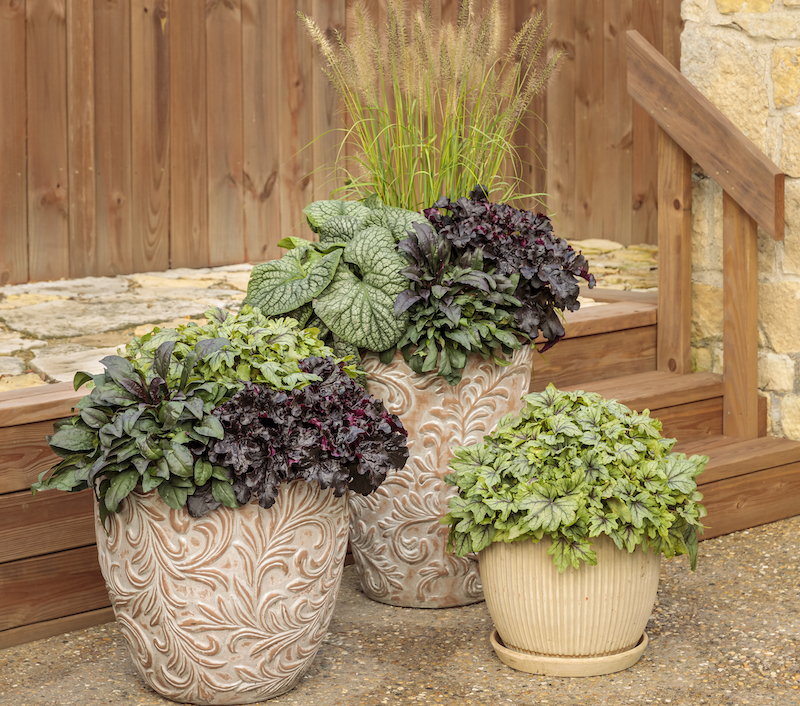Beardtongue (one of the common names for Penstemon ssp) is a native plant and pollinator magnet that can be grown in a wide range of gardening zones. Waterwise and xeric planting plans often include Beardtongue for its long-lasting flowers and vertical growth. Alpine and rock gardens are also perfect for highlighting the drought-tolerant characteristics and beautiful range of flower colors in blue, purple, white, and red shades.
Penstemons grow best in lean soil with excellent drainage. Beardtongue is often found growing alongside roads, rail tracks, and at the edge of wetland and woodland zones in its native range of North America. Full sun with at least 6 hours of direct sunlight helps these plants to bloom all summer and into the early fall. Supplemental watering will be required until Beardtongue has established a deep root system. Annual fertilizing is rarely required, but regular dividing and transplanting helps beardtongue to remain vigorous.

Shrubs To Plant With Beardtongue
Beardtongue is most at home in a naturalistic and wildlife-friendly garden design. The design for a meadow planting can begin with native shrubs to provide structure ornamental appeal. Consider snowberry, red twig dogwood, ninebark, flowering currant, and serviceberry, which all provide lovely flowers during the spring and summer that attract native pollinators. Ninebark and red twig dogwood have the added appeal of colorful bark during the bleak winter months.
Beardtongue also works well in the herb garden alongside Mediterranean-type plants such as lavender, rosemary, sage, and thyme. The silvery green foliage of lavenders and rosemary make a great foil for beardtongue’s more delicately colored pink and white flowers.
Perennials To Plant With Beardtongue
The best perennials to plant with beardtongue are pollinator-friendly natives and other drought-tolerant species. Ensuring that all of the plants in a plan have the same light and water requirements makes a design much easier to manage and more likely to be low maintenance. Perennials that thrive in the same conditions as beardtongue include daylily, black-eyed Susan, coneflowers, and blanket flowers. You can also add blazing star, various milkweed species, yarrow, and veronica, which attract swarms of beneficial pollinators during their long blooming period.
Annuals To Plant With Penstemon
Both hardy and hot weather annuals pair easily with beardtongue. During the cooler weather of spring, plant penstemon with annual baby's breath, California and bread seed poppies, nigella, bachelor’s buttons, and larkspur, which often self-seed to ensure their longevity in the garden. Later in early summer, add cosmos, cleome, pentas, and globe amaranth in colors coordinating with beardtongue. Annual plants also make good ground cover near beardtongue. The shallow roots of the annual plants will not interfere with other plants and acts as a living mulch to keep the soil cool during the hot days of summer. Moss rose, sweet alyssum, and clarkia are all good plants to choose from.
Best Companion Plants For Beardtongue in Containers
Growing beardtongue in a planter allows the gardener to highlight the often overlooked and highly ornamental foliage. Many cultivars of beardtongue have deeply colored and variegated leaves that provide interest even when the plant is not in bloom. Combine maroon-leaved beardtongue with brunnera, coral bells, and foamy bells as filler and spiller plants to surround an equally dark-colored ornamental grass as the centerpiece. Make sure that the planter you use has excellent bottom drainage and is filled with a peat-free potting mix. Place this pollinator-friendly container near a seating area on a sunny deck or patio to enjoy visiting hummingbirds, butterflies, and other beneficial insects all summer.

Plants Not To Grow With Beardtongue
Beardtongues are gorgeous pollinator plants, but they tend to look out of place in more formal gardens that are filled with heavily clipped hedges and restrained hybrid shrub roses. Beardtongue will not grow well in garden beds that remain moist year-round. This drought-tolerant plant needs to dry between watering to stay healthy and avoid root rot. Aquatic and boggy plants such as flag iris, cattails, marsh marigold, or astilbe should not be included in a design featuring beardtongue.
Best Plants To Grow With Beardtongue
In a garden landscape, beardtongue looks fantastic when paired with other free-flowering and informal-looking perennials. Plant a stately ornamental grass at the back of a mixed perennial bed to show off medium-height plants. Use pale yellow daylilies and white flowered veronica to gently contrast a soft purple beardtongue. The whole planting will not only be low maintenance, but also long-lived, as the plants are herbaceous perennials that will return year after year.
 |
Author Robbin Small - Published 10-06-2023 |
